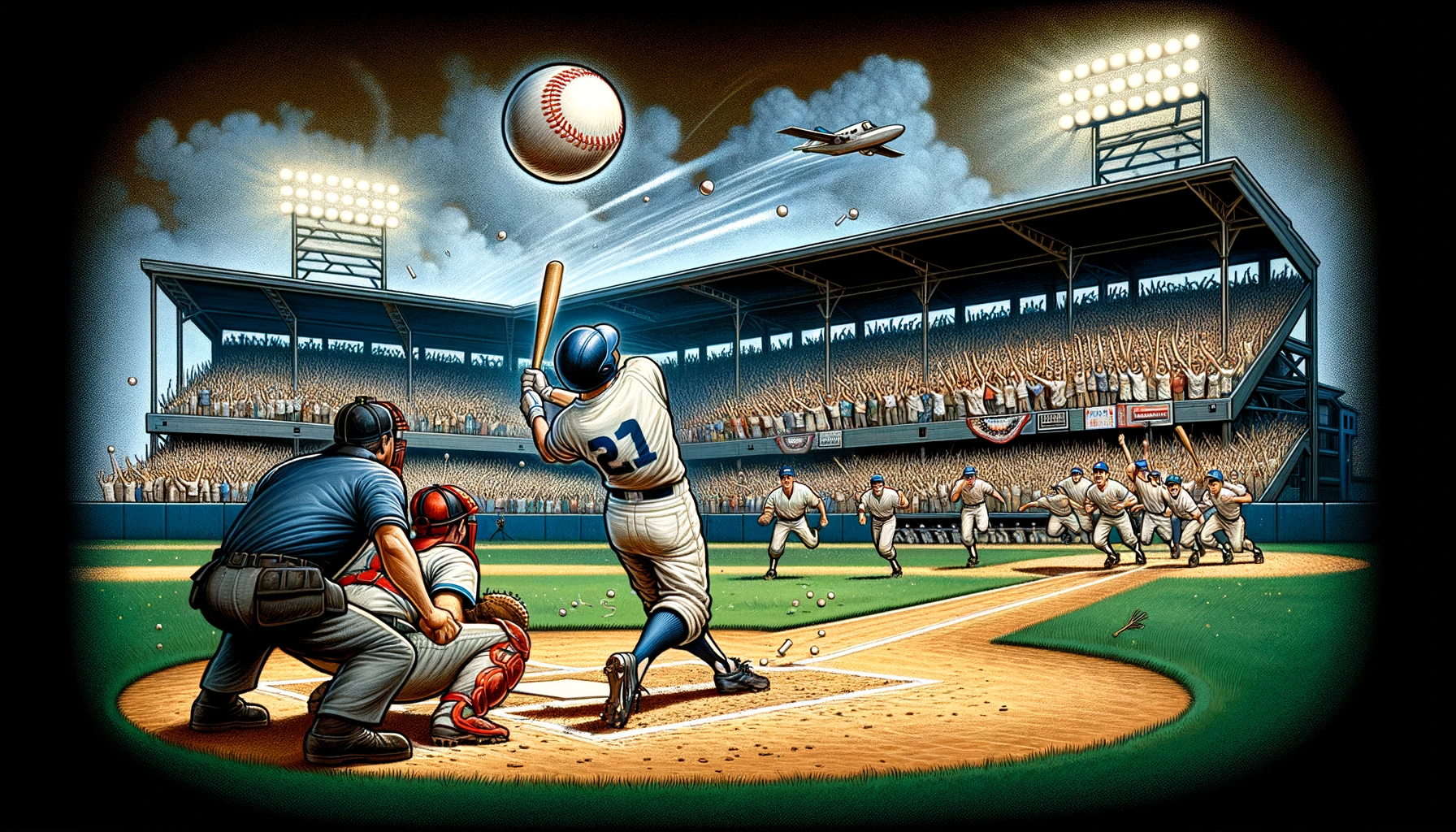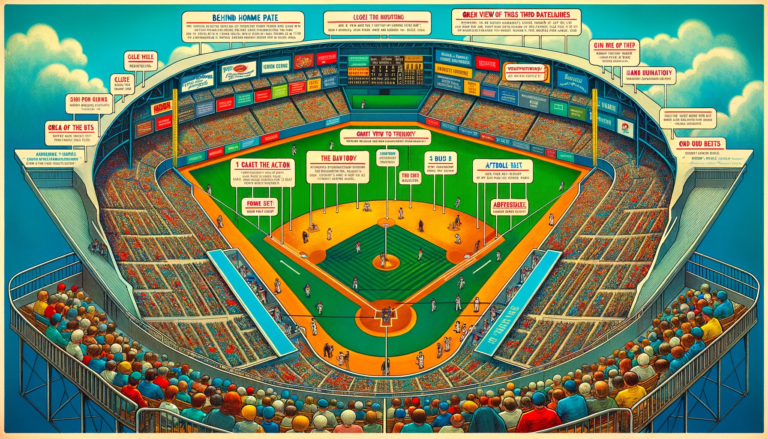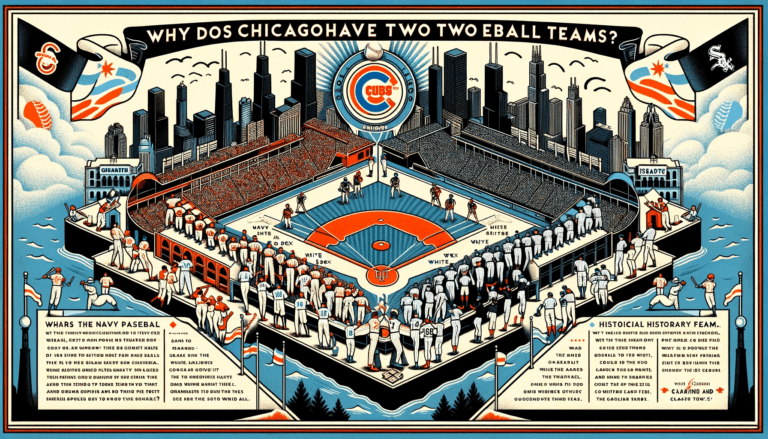What is a Walk-Off in Baseball?
In simple terms, a walk off occurs when the home team scores the winning run in the bottom of the final inning. It’s that exhilarating moment when the game ends abruptly, and the crowd erupts in cheers.
But there’s more to it than just a run crossing the plate. A walk off victory is a thrilling conclusion to a hard-fought game, often accompanied by dramatic plays and intense emotions.
So, if you’re curious about this exciting aspect of America’s favorite pastime, you’re in the right place.
Let’s explore the world of walk offs and uncover what makes them such a memorable part of baseball lore.”
Key Takeaways
- A walk off occurs when the home team wins the game by scoring the deciding run in the bottom of the last inning.
- Walk offs can be achieved through various plays, such as home runs, base hits, or even errors by the opposing team.
- Strategic decisions, including the use of cleanup hitters and intentional walks, can set the stage for a potential walk off.
- Iconic walk off moments, like Kirk Gibson’s 1988 World Series homer, are etched in baseball lore and celebrated for generations.
- The emotional impact of a walk off is profound, sparking jubilation for the victors and heartbreak for the defeated.
The Anatomy of a Walk Off
Defining the Walk Off
A walkoff occurs when the home team scores the winning run in the bottom of the last inning, instantly ending the game.
This moment captures the essence of baseball drama, as victory is snatched in the final possible moment.
The term ‘walk off’ can apply to various game-ending plays, including:
- A home run that clears the bases and secures the win.
- A base hit that allows the winning run to score from second or third base.
- A sacrifice fly or a fielder’s choice that brings in the decisive run.
While the walk off is often associated with a home run, any hit or play that results in the home team taking the lead as the last play of the game qualifies.
The sudden shift from tension to triumph makes the walk off one of the most exhilarating events in sports.
The Bottom of the Last Inning
The bottom of the last inning represents the final opportunity for the home team to secure victory. It’s the climax pitch a passed ball of the game, where the outcome is often decided.
This is the moment when the home- team takes the lead and, having witnessed the visiting team’s last offensive effort, takes its turn at bat with the chance to end the game on a winning note.
During this pivotal inning, several scenarios can unfold:
- The home team may be trailing and needs to score to either tie the game or take the lead.
- The game could be tied, and any run scored by the home team would result in an immediate win.
- In rare cases, the home team might be ahead and can add insurance runs, though this would not be a walk-off situation.
The pressure is immense, as every pitch and play carries the potential to be the difference between a win or a continuation into extra innings, which are used to break a tie and determine a winner when the score is level at the end of the regulation nine innings.
Scoring the Winning Run
The moment a team scores the winning run is the climax of any baseball game. The game ends immediately when the winning run touches home plate, except in the rare case of a walk-off home run, where the batter and any runners on base are allowed to complete their circuit of the bases.
In the event of a tie at the end of regulation play, the game extends into extra innings until one team gains the lead after a completed inning of extra innings.
Runners in scoring position, those on second or third base, are pivotal in the final play. A base hit, a scratch hit, or even a screaming line drive can bring them home.
The strategy intensifies with runners at the corners, as the defense must be alert to multiple threats. A successful base running maneuver, such as a squeeze play on a flyout or a stolen base, can be the difference between victory and defeat.
In a ‘time play,’ a run can still count even if the third out or double play is made, provided it’s not a force out or the batter-runner being put out before reaching first base.
The runner must cross home plate before the third out is recorded elsewhere on the field, adding another layer of suspense to the game’s final moments.
Read Also: What is a Balk in Baseball
Iconic Walk-off Moments in Baseball History

Kirk Gibson’s 1988 World Series Homer
The 1988 World Series provided one of the most unforgettable moments in baseball history. Kirk Gibson, hobbled by injuries, was not expected to play in Game 1 against the Oakland Athletics.
Yet, in a turn of events that seemed scripted for Hollywood, Gibson stepped up to the plate as a pinch hitter in the bottom of the ninth inning.
Facing the formidable closer Dennis Eckersley, Gibson mustered all his strength for an at-bat that would become legendary.
With a 3-2 count and two outs, the tension was palpable. Gibson, known for his resilience, did the unthinkable:
- He connected with Eckersley’s pitch.
- The ball soared over the right-field wall.
- The Dodgers’ bench erupted as Gibson rounded the bases.
This pinch-hit walk-off home run not only won the game but also set the tone for the rest of the series.
It was a testament to the unpredictability of baseball and the sheer willpower of an athlete pushing past his physical limits to achieve greatness.
Joe Carter’s 1993 World Series Clincher
The 1993 World Series provided one of the most electrifying finales in baseball history. Joe Carter’s walk-off 3-run home run not only clinched the championship for the Toronto Blue Jays but also etched his name into the annals of baseball lore.
The moment was so iconic that it is often replayed with the legendary call by Tom Cheek, forever capturing the excitement of the victory.
Carter’s homer was a culmination of a tense battle between the Philadelphia Phillies and the Blue Jays.
The following points highlight the significance of Carter’s achievement:
- It marked the second consecutive World Series title for the Blue Jays.
- Carter became one of the few players to end a World Series with a home run.
- The victory solidified the Blue Jays’ perfect record in World Series appearances.
The jubilation that followed the home run was a testament to the sheer joy and relief experienced by the players and fans alike.
The walk-off home run is a powerful reminder of how a single swing of the bat can instantly transform the fortunes of a team and ignite the passions of a nation.
David Freese’s 2011 World Series Heroics
The 2011 World Series provided one of the most electrifying moments in baseball history, courtesy of David Freese of the St. Louis Cardinals.
In Game 6, with the Cardinals one strike away from elimination, Freese delivered a game-tying triple.
But it was his walk off home run in the 11th inning that etched his name into baseball lore, forcing a Game 7 and ultimately leading to a Cardinals’ championship victory.
The impact of Freese’s heroics went beyond the scorecard. It was a moment that sparked a surge of civic pride and became a defining memory for Cardinals fans.
The image of Freese throwing his helmet to the ground in sheer jubilation became an iconic symbol of triumph against the odds.
- The game-tying triple in the 9th inning
- The walk off homer in the 11th inning
- The Cardinals forcing a Game 7
This sequence of events exemplifies the sheer unpredictability and excitement that a walk off can bring to the game of baseball, turning players into legends and ordinary games into unforgettable sagas.
Read Also: What is the Mercy Rule in Baseball
The Strategy Behind the Walk Off

Setting the Stage for a Walk off
The stage for a walk off is set when the game is on the line, and the home team has a chance to win in the bottom of the last inning.
The tension is palpable as the team strategizes to maximize their chances of scoring the winning run.
Here are some key factors:
- The manager may decide to intentionally walk a powerful hitter to avoid the risk of a big hit, effectively taking the bat out of the hands of a potential threat.
- Runners on base are crucial, as they represent the winning run. The team may employ strategies such as stealing bases or executing a hit-and-run to get runners into scoring position.
- The batting order is also critical. Teams often rely on their cleanup hitter to deliver in clutch situations, but they must also consider the possibility of setting up pinch hitters or runners to optimize matchups and speed on the bases.
Each decision is made to create the most advantageous situation to score that final, decisive run. The anticipation builds with each pitch, as any swing could lead to a sudden and dramatic end to the game.
The Role of the Cleanup Hitter
In the strategic chess game of baseball, the cleanup hitter holds a pivotal role. Typically the fourth batter in the lineup, this player is often a power hitter tasked with driving home runners and, ideally, ‘cleaning up’ the the bases loaded a sacrifice move.
The anticipation builds as the first three batters aim to set the table, creating the perfect scenario for the cleanup hitter to deliver a significant blow, such as a grand slam.
The effectiveness of two outs and a runner on cleanup hitter can be the difference between a walk off victory and a missed opportunity.
Their ability to produce a ‘clean hit’ can send a ball soaring over the outfielder’s head, bringing runners home and altering the course of the game.
In moments of high pressure, the cleanup hitter’s performance is magnified, with every swing carrying the potential to become a legendary walk off moment.
Recent games have showcased the importance of this role. For instance, in Krupinski’s walk off, the cleanup hitters — third baseman Mike Sears and right fielder Parker Stinson — demonstrated their value.
Their critical hits to the warning track were instrumental in turning the tide of the game, underscoring the cleanup hitter’s impact in a walk off situation.
Intentional Walks and Strategic Pitching
In the high-stakes environment of a potential walk off situation, pitchers and managers often resort to strategic plays to navigate the threat.
Intentional walks are a common tactic, used to avoid pitching to a particularly dangerous hitter or to set up a force play at any base. This can shift the pressure onto the next batter, who may not pose as significant a threat.
Strategic pitching goes beyond just intentional walks. Pitchers may ‘waste a pitch’ when ahead in the count, hoping the batter will chase a ball outside the strike zone.
They might also employ a variety of pitches, such as breaking balls or changeups, to keep hitters off balance.
The goal is to maximize the chances to induce a weak contact or a strikeout, minimizing the chance of a hit that could lead to the winning run.
- Working the count: Forcing the batter to face more pitches, potentially leading to a mistake or a walk.
- Pitch selection: Using a mix of pitches to confuse the batter and prevent them from timing their swing effectively.
- Pitcher-batter matchup: Managers may play the odds by choosing pitcher-batter matchups that are statistically in their favor.
Ultimately, the cat-and-mouse game between pitcher and batter in these moments is a delicate balance of risk and reward, with the outcome potentially hanging on each pitch.
Read Also: What is the Pennant in Baseball
The Emotional Impact of a Walk Off

Celebration and Elation
The moment a walk off is secured, the stadium erupts into a cacophony of cheers and jubilation.
Players rush the field, embracing the hero of the game as fans stand in awe of the dramatic conclusion. The celebration is spontaneous and heartfelt, encapsulating the pure joy of the sport.
- Teammates converge at home plate, waiting to congratulate the scorer.
- The crowd’s energy reaches a fever pitch, with every spectator sharing in the victory.
- The walk off hero is often lifted onto shoulders or doused in Gatorade, marking a moment of triumph.
This unscripted exuberance is a testament to baseball’s ability to create unforgettable moments of collective happiness.
It’s a scene that will replay in highlight reels and in the memories of fans for years to come, a perfect blend of athletic achievement and emotional resonance. You may read the guide on What is an Assist in Baseball
The Agony of Defeat
While the walk off delivers an electrifying jolt of joy to the victors, it simultaneously inflicts a sharp sting of defeat on the opposing team.
The agony of defeat is a poignant reminder of the fine line between triumph and despair in sports.
For the losing team, the walk off can be a moment of profound reflection, a time to consider the ‘what ifs’ and the narrow margins that define the outcome of a game.
- The defensive indifference shown in the final innings can sometimes backfire, leading to a critical advance by the baserunners.
- A nail-biter game that ends in a walkoff can leave the losing team’s fans with a bitter taste, as the anticipation of victory turns abruptly into the realization of loss.
- The finality of a walkoff in a payoff game underscores the high stakes and the pressure that players face in decisive moments.
The defeated team must quickly regroup, as baseball’s relentless schedule offers little time for dwelling on the past.
The next game presents an opportunity for redemption, but the memory of a walk off loss can linger, serving as both a lesson and a motivator for future encounters.
The Walk off’s Place in Baseball Lore
The walk off has etched itself into the fabric of baseball, transcending mere game outcomes to become a symbol of dramatic triumph.
It’s a moment that encapsulates the unpredictable nature of the sport, where heroes are born in the blink of an eye.
- The walk off serves as a testament to the game’s enduring appeal, where narratives of resilience and determination unfold.
- It’s a phenomenon that connects generations, with tales of walk off glory passed down like folklore.
- The emotional resonance of such moments often defines players’ careers, turning them into legends.
In the annals of baseball history, walk offs are more than just a game-winning hit; they are the exclamation points on the stories that fans cherish for a lifetime.
See Also: What is Lob in Baseball
Conclusion
In summary, a walk off in baseball is the thrilling moment when the home team scores the winning run in the final inning, ending the game with a burst of excitement.
It’s a testament to the competitive spirit and dramatic twists that make baseball so beloved by fans worldwide.
Whether you’re a seasoned enthusiast or new to the sport, understanding the significance of a walk off adds another layer of appreciation for the game’s rich history and emotional highs.
Frequently Asked Questions
What is a walk-off in baseball?
A walk-off occurs when the home team immediately wins the game by scoring a run to take the lead in the bottom of the last inning.
What is a payoff pitch?
A payoff pitch is thrown with a full count, meaning the batter has three balls and two strikes. It’s a crucial pitch that will result in either a strikeout, a hit, a walk, or could extend the at-bat if it’s fouled off.
How can a pitcher ‘take the bat out of a batter’s hands’?
This phrase refers to issuing an intentional walk to a batter, thereby preventing them from swinging at a pitch and potentially hitting it.
What is the emotional impact of a walk off on both teams?
For the winning team, a walk off brings celebration and elation. For the losing team, a walk off grand slam, it’s often a moment of agony and defeat.
What is the strategy behind a walkoff in baseball?
The strategy can involve setting the stage for a walk off by getting runners on base, having a strong cleanup hitter ready to drive in runs, and making strategic pitching decisions like intentional walks.
What are some iconic walkoff moments in baseball history?
Some iconic moments include Kirk Gibson’s 1988 World Series homer, Joe Carter’s 1993 World Series clincher, and David Freese’s 2011 World Series heroics.







